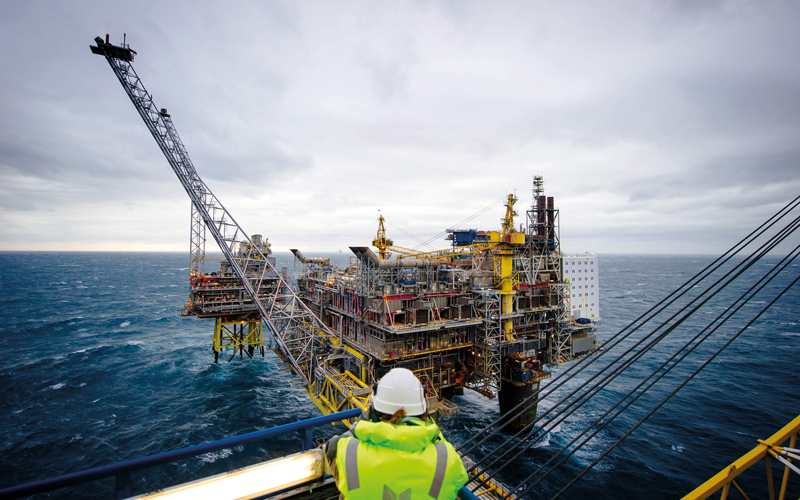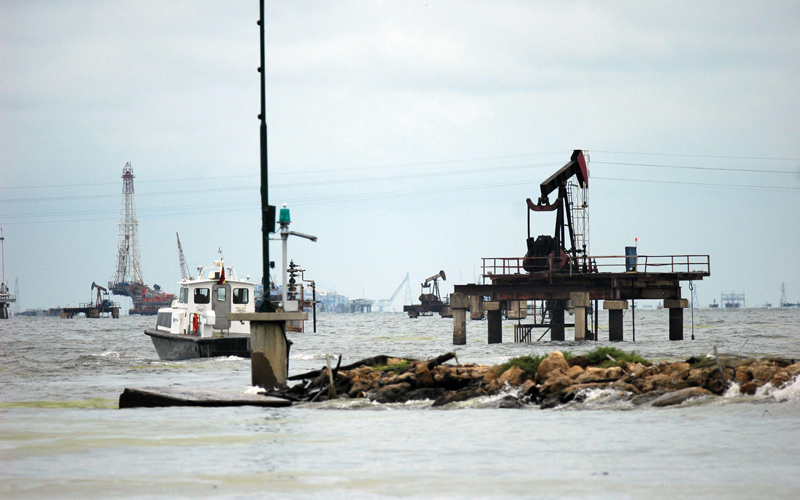Expanding horizons: oil and gas opportunities across Europe and the Americas
The oil and gas industry in Europe and the Americas is undergoing significant shifts driven by energy independence imperatives, climate commitments and geopolitical dynamics.Despite facing political and fiscal challenges, these regions offer significant prospects as they continue to navigate a complex landscape, say Muhammad Arif Syafiq and Lucas Ramos at EIC

Europe
Europe’s upstream oil and gas is at a critical crossroads, with offshore opportunities gaining prominence amid growing energy security concerns and ambitious climate pledges. The market outlook remains robust as operators strive to balance the demand for reliable energy supplies with the urgent need for sustainable practices.
North Sea dominance
Interest in upstream exploration and production (E&P) continues to centre around the North Sea, with as many as 10 regional projects anticipated to reach final investment decisions within the next two years.
As Europe intensifies its focus on energy independence and carbon neutrality, the offshore sector is poised to play a key role in driving economic growth and environmental stewardship in the coming years.
EICDataStream currently tracks more than 260 proposed and ongoing European upstream oil and gas projects, valued at more than US$132bn and scheduled for startup between now and 2030. Most of these projects originate from the North Sea’s major producing countries – the UK and Norway. These two countries alone contribute more than 80% of the region’s projects, with a combined CAPEX exceeding US$109bn. However, only 24% of the 260 projects slated for startup by 2030 have entered the construction phase, leaving 76% yet to commence construction.

Norway’s strategic energy role
As a non-EU member within the European Economic Area, Norway is pivotal in ensuring the continent’s energy security, supplying 25% of its natural gas needs. Renowned for its stable political environment and transparent governance, Norway stands out as a reliable energy supplier in the European oil and gas market. Key developments such as the Yggdrasil area, Valhall-PWP, SSPs and Utsira High Clusters underscore its significance. Norway’s steadfast stability positions it as a preferred partner for European nations seeking to secure their energy supplies. Major players like Equinor, Aker BP and Vaar Energi are committed to expanding hydrocarbon production. At the same time, Norway aims for consistent oil and gas output through targeted exploration efforts in frontier and existing infrastructure-rich areas.
Challenges for UK E&P
Conversely, the future of the UK E&P sector remains volatile due to ever-worsening political and fiscal barriers impeding investment and project progress. While the tax rate remains unchanged, the extension of the Energy Profits Levy to March 2029 has raised concern within UK North Sea supply chains, exacerbating the fiscal instability and bleak timeline for developments in the pipeline. As the UK election looms, the Labour Party’s tax proposal places the UK’s E&P sector in a precarious ‘lose-lose’ situation.
The Americas
In the coming years, the Americas’ oil and gas industry will show robust activity across upstream, midstream and downstream sectors. This sustained growth is underpinned by the understanding that while energy transition efforts gain momentum across the continent, oil and gas will continue to play a significant role.
EICDataStream projects a CAPEX of US$1.1tn for nearly 900 projects set to commence by the end of the 2020s. These ventures span field development/redevelopment in the upstream sector, greenfield platforms, liquefied natural gas (LNG) liquefaction projects in the midstream sector, and biofuels/sustainable aviation fuel (SAF) plants in the downstream sector.
Understanding the geopolitical dynamics is crucial to gauge the feasibility of future energy projections. In 2024, significant political developments have unfolded across South, Central and North America, directly impacting the energy sector.
Upstream developments
According to EICDataStream, there will be upwards of US$300bn in opportunities across over 130 offshore upstream projects in the Americas by 2030.
South America leads in offshore growth, driven by a robust pipeline of Petrobras’ floating production storage and offloading units (FPSOs) in Brazil’s pre-salt region and ExxonMobil’s FPSOs in offshore Guyana. Additionally, discoveries by TotalEnergies in Suriname and by LLOG, Shell and Woodside in the Gulf of Mexico are expected to come online. However, beyond the 2020s, the escalating challenges in securing financing agreements among operators, engineering, procurement and construction (EPC) bidders and international banks could add complexity in advancing new E&P projects.
In early April 2024, Venezuelan President Nicolás Maduro enacted legislation to designate the Essequibo region, encompassing two-thirds of Guyana’s land area, as a new Venezuelan province. This has escalated the long-standing border dispute between the two nations, with Venezuela seeking control over resources in Guyana’s Stabroek block, operated by ExxonMobil and estimated to hold 11bn barrels of recoverable resources. Since 2015, Guyana has garnered attention as an oil and gas hotspot, following more than 30 discoveries at Stabroek.
Meanwhile, in the Caribbean, Trinidad and Tobago authorities have pursued a temporary private permit from US authorities to develop the Manakin-Cocuína shared gas fields along the Venezuela border. This unfolds amid the US’s decision not to renew General Licence 44, a six-month licence granted in October 2023 authorising limited oil and gas business with Venezuela.
Midstream turmoil
In early 2024, the Biden administration’s decision to temporarily stop licensing new LNG projects stirred controversy within the US’s thriving LNG export sector.
Throughout the late 2000s, advances in hydraulic fracturing and horizontal drilling techniques propelled US onshore natural gas production to historic levels, paving the way to establish and expand a national LNG export industry over the subsequent decade.
Between 2016 and 2023, US LNG production skyrocketed from negligible exports to global leadership, driven by Europe’s energy security concerns following Russia’s invasion of Ukraine and escalating calls for decarbonisation.
The freeze on LNG projects is anticipated to remain until November 2024, coinciding with the country’s presidential elections. Should Donald Trump emerge victorious, he is expected to reverse the freeze and advocate for industry interests while prompting a reassessment of the Bureau of Ocean Energy Management’s plans to conduct no more than three oil and gas lease sales in the US Gulf of Mexico in 2025, 2027 and 2029.

Rise of low-carbon fuel initiatives
The region is witnessing a notable increase in newly announced low-carbon fuel projects to produce renewable diesel and SAF. Drop-in SAF initiatives are increasing in North America as the aviation industry seeks alternatives to conventional jet fuel. Boosted by funds from the Inflation Reduction Act, the US Department of Energy is playing a leading role in this nascent industry by investing in the scale-up of various innovative technologies for domestic fuel production.
Furthermore, the Brazilian ethanol industry offers significant synergies with the expanding SAF market and could supply billions of litres of feedstock annually to support US SAF production.
Future outlook
The Americas are poised to remain key players in the global oil and gas industry in the foreseeable future. Numerous opportunities are set to emerge in both traditional and innovative energy markets as energy security and energy transition concerns drive the industry’s evolution.
By Muhammad Arif Syafiq, Senior Energy Analyst, and Lucas Ramos, Energy Analyst (Oil and Gas), EIC

Major projects To Watch
US
Rio Grande LNG Export Terminal (Phase 1)
Value: US$14.8bn
Startup: 2027
Stage: EPC
Status: Contract awarded
Operator: Next Decade
Canada
Ksi Lisims FLNG
Value: US$8bn
Startup: 2028
Stage: Front-end engineering design
Status: Contract awarded
Operator: Ksi Lisims LNG
Guyana
Whiptail Oil Field (Jaguar FPSO)
Value: US$12.7bn
Startup: 2027
Stage: EPC
Status: Contract awarded
Operator: ExxonMobil
Brazil
Raia Manta/Raia Pintada Gas Fields (Raia FPSO)
Value: US$9bn
Startup: 2028
Stage: EPC
Status: Contract awarded
Operator: Equinor
Norway
Yggdrasil Area
Value: US$10.8bn
Startup: 2027
Stage: EPC
Status: Contract awarded
Operator: Aker BP
UK
Bressay Heavy Oil Field
Value: US$5.5bn
Startup: 2028
Stage: Conceptual design
Status: Contract awarded
Operator: EnQuest plc
Source: EICDataStream
Interested in exploring global oil and gas opportunities?
Inform your decision-making with the latest contracting activity and market research from EIC.
To discuss your needs, email Pietro Ferreira at pietro.ferreira@the-eic.com
Image credit | Alamy | Getty | Supplied






Follow us
Advertise
Free e-Newsletter